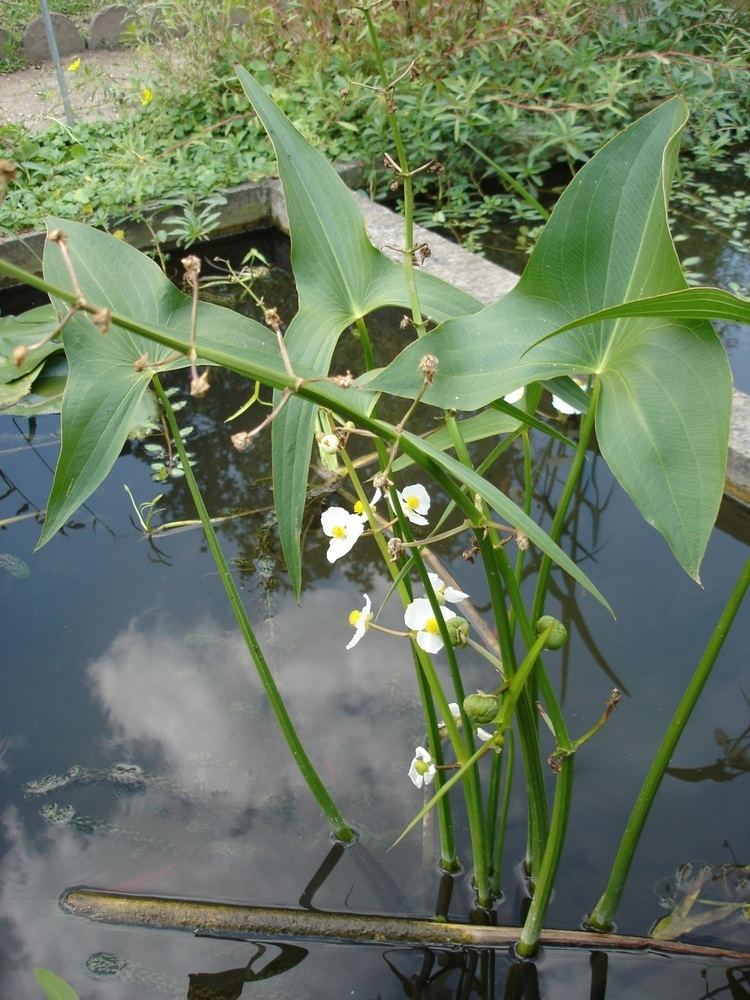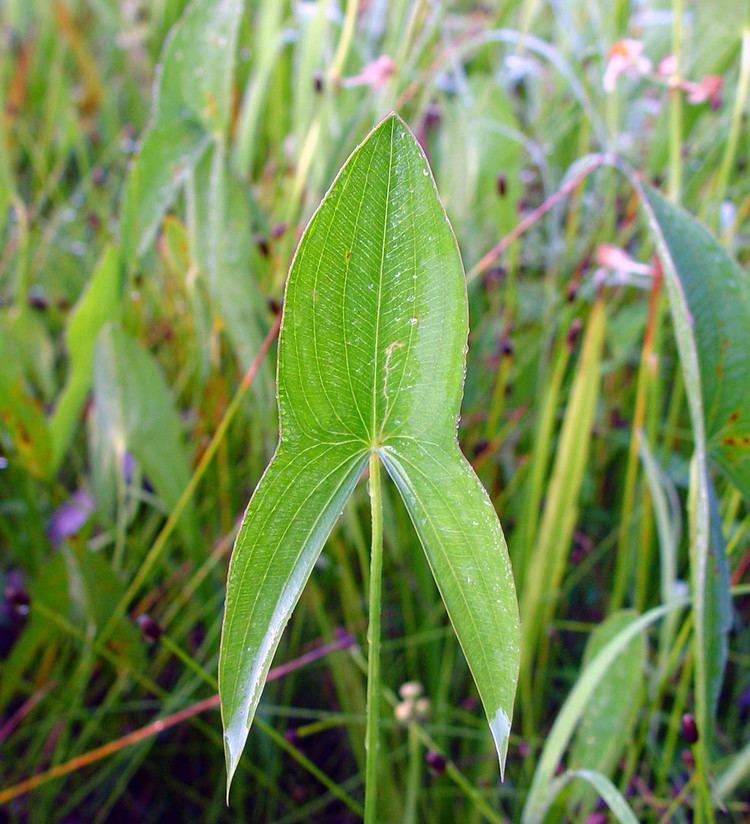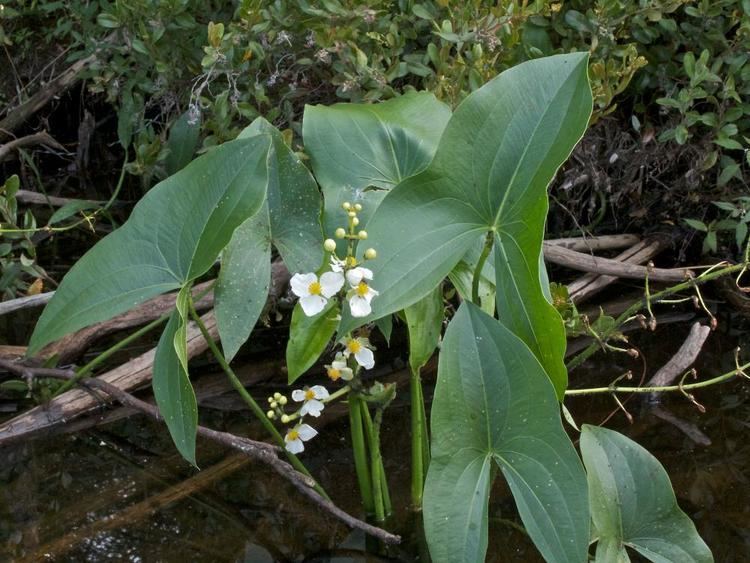Rank Species | Genus Sagittaria Higher classification Sagittaria | |
Similar Water, Sagittaria sagittifolia, Marsh Marigold, Ceratophyllum demersum, Potato bean | ||
Common arrowhead broadleaf arrowhead sagittaria latifolia
Sagittaria latifolia is a plant found in shallow wetlands and is sometimes known as broadleaf arrowhead, duck-potato, Indian potato, or wapato. This plant produces edible tubers that were extensively used by the Indigenous peoples of the Americas.
Contents
- Common arrowhead broadleaf arrowhead sagittaria latifolia
- Broadleaf arrowhead sagittaria latifolia
- Description
- Distribution
- Ecology
- Cultivation
- References

Broadleaf arrowhead sagittaria latifolia
Description

Sagittaria latifolia is a variably sized (2 to 20 meters in length) perennial growing in colonies that can cover large amounts of ground. The roots are white and thin, producing white tubers covered with a purplish skin a good distance (0.3 to 1 m long, 0.15 to 0.6 meter deep) from the mother plant. It is green and white. The plant produces rosette of leaves and an inflorescence on a long rigid scape. The leaves are extremely variable, from very thin at 1 to 2 cm to wedge shaped like those of Sagittaria cuneata. Spongy and solid, the leaves have parallel venation meeting in the middle and the extremities. The inflorescence is a raceme composed of large flowers whorled by threes. Usually divided into female flowers on the lower part and male on the upper, although dioecious individuals are also found. Three round, white petals and three very short curved, dark green sepals. Male flowers are easily distinguished from female due to the dissimilarity between the 25 to 50 yellow stamens of the male and the sphere of green carpels of the female ones.

The name of Shubenacadie, a community located in central Nova Scotia, Canada, means "abounding in ground nuts" (i.e., broadleaf arrowhead) in the Mi'kmaq language.
Distribution

Sagittaria latifolia is native to southern Canada and most of the contiguous United States, as well as Mexico, Central America, Colombia, Venezuela, Ecuador, and Cuba. It is also naturalized in Hawaii, Puerto Rico, Bhutan, Australia and much of Europe (France, Spain, Italy, Romania, Germany, Switzerland, the Czech Republic, and European Russia. It is considered an invasive weed in some of those places. In Mexico, it is reported from Campeche, Nayarit, Tabasco, Tamaulipas, Puebla, Jalisco, Durango, Tlaxcala, Estado de México, Veracruz and Michoacán.
Ecology

Extremely frequent as an emergent plant, broadleaf arrowhead forms dense colonies on very wet soils that become more open as the species mixes with other species of deeper water levels. These colonies forms long bands following the curves of rivers, ponds and lakes, well-marked by the dark green color of the leaves. The plant has strong roots and can survive through wide variations of the water level, slow currents and waves. It displays an affinity for high levels of phosphates and hard waters.

Despite the name Duck Potato, ducks rarely consume the tubers, which are usually buried too deep for them to reach, although they often eat the seeds. Beavers, North American Porcupines, and Muskrats, however, eat the whole plant, tubers included.
Cultivation
This plant is easily cultivated in 0.15 m to 0.45 m of water with no or little current. The tubers are planted well spaced (no more than 12 plants per square meter) at the end of May at a depth of 5 to 7 cm. Fertilize with decomposed manure. They can be multiplied through seeding or division in July. The tubers of Sagittaria latifolia and Sagittaria cuneata have long been an important food source to indigenous peoples of the Americas. The tubers can be detached from the ground in various ways: with the feet, a pitchfork, or a stick, and after digging up, the tubers usually float to the surface. Ripe tubers can be collected in the fall, and are also often found then floating freely.

These tubers can be eaten raw or cooked for 15 to 20 minutes. The taste is similar to potatoes and chestnuts, and they can be prepared in the same fashions: roasting, frying, boiling, and so on. They can also be sliced and dried to prepare a flour.
Other edible parts include late summer buds and fruits. This plant is vulnerable to aphids and spider mites.
